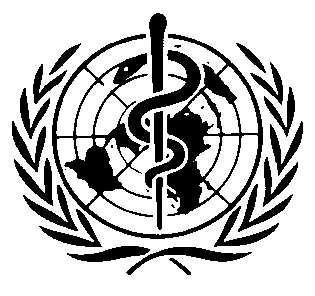Carbon monoxide (CO) is a colorless, odorless, and toxic gas, which
is predominately produced by incomplete combustion of carbon-containing
materials. Incomplete combustion occurs when insufficient oxygen is used
in the fuel (hydrocarbon) burning process. Consequently, more carbon
monoxide, in preference to carbon dioxide, is emitted. Some examples of
this are the following: vehicle exhausts, fuel burning furnaces, coal
burning power plants, small gasoline engines, portable gasoline-powered
generators, power washers, fire places, charcoal grills, marine engines,
forklifts, propane-powered heaters, gas water heaters, and kerosene
heaters.
Exposure to carbon monoxide impedes the blood's ability to carry
oxygen to body tissues and vital organs. When carbon monoxide is
inhaled, it combines with hemoglobin (an iron-protein component of red
blood cells), producing carboxyhemoglobin (COHb), which greatly
diminishes hemoglobin's oxygen-carrying capacity. Hemoglobin's binding
affinity for carbon monoxide is 300 times greater than its affinity for
oxygen. As a result, small amounts of carbon monoxide can dramatically
reduce hemoglobin's ability to transport oxygen. Common symptoms of
carbon monoxide exposure are headache, nausea, rapid breathing,
weakness, exhaustion, dizziness, and confusion. Hypoxia (severe oxygen
deficiency) due to acute carbon monoxide poisoning may result in
reversible neurological effects, or it may result in long-term (and
possibly delayed) irreversible neurological (brain damage) or
cardiological (heart damage) effects.
Carbon monoxide |
|||||
Synonyms & Trade NamesCarbon oxide, Flue gas, Monoxide |
|||||
CAS No.630-08-0 |
RTECS No.FG3500000 |
DOT ID & Guide1016 1199202 168 |
|||
FormulaCO |
Conversion1 ppm = 1.15 mg/m3 |
IDLH1200 ppmSee: 630080 |
|||
Exposure LimitsNIOSH REL: TWA 35 ppm (40 mg/m3) C 200 ppm (229 mg/m3)OSHA PEL†: TWA 50 ppm (55 mg/m3) |
Measurement MethodsNIOSH 6604 OSHA ID209 See: NMAM or OSHA Methods |
||||
Physical DescriptionColorless, odorless gas. [Note: Shipped as a nonliquefied or liquefied compressed gas.] |
|||||
MW:28.0 |
BP:-313°F |
MLT: -337°F | Sol:2% |
VP:>35 atm |
IP:14.01 eV |
Fl.P:NA (Gas) |
UEL:74% |
LEL:12.5% |
RGasD:0.97 |
||
| Flammable Gas | |||||
Incompatibilities & ReactivitiesStrong oxidizers, bromine trifluoride, chlorine trifluoride, lithium |
|||||
Exposure Routesinhalation, skin and/or eye contact (liquid) |
|||||
Symptomsheadache, tachypnea, nausea, lassitude (weakness, exhaustion), dizziness, confusion, hallucinations; cyanosis; depressed S-T segment of electrocardiogram, angina, syncope |
|||||
Target Organscardiovascular system, lungs, blood, central nervous system |
|||||
Personal Protection/Sanitation(See protection codes)Skin: Frostbite Eyes: Frostbite Wash skin: No recommendation Remove: When wet (flammable) Change: No recommendation Provide: Frostbite wash |
First Aid(See procedures)Eye: Frostbite Skin: Frostbite Breathing: Respiratory support |
||||
Respirator RecommendationsNIOSH Up to 350 ppm: (APF = 10) Any supplied-air respirator Up to 875 ppm: (APF = 25) Any supplied-air respirator operated in a continuous-flow mode Up to 1200 ppm: (APF = 50) Any air-purifying, full-facepiece respirator (gas mask) with a chin-style, front- or back-mounted canister providing protection against the compound of concern† (APF = 50) Any self-contained breathing apparatus with a full facepiece (APF = 50) Any supplied-air respirator with a full facepiece Emergency or planned entry into unknown concentrations or IDLH conditions: (APF = 10,000) Any self-contained breathing apparatus that has a full facepiece and is operated in a pressure-demand or other positive-pressure mode (APF = 10,000) Any supplied-air respirator that has a full facepiece and is operated in a pressure-demand or other positive-pressure mode in combination with an auxiliary self-contained positive-pressure breathing apparatus Escape: (APF = 50) Any air-purifying, full-facepiece respirator (gas mask) with a chin-style, front- or back-mounted canister providing protection against the compound of concern† Any appropriate escape-type, self-contained breathing apparatus | |||||
International Chemical Safety Cards
| CARBON MONOXIDE | ICSC: 0023 |




Carbonic oxide CO Molecular mass: 28.0 (cylinder) 
 ICSC # 0023
ICSC # 0023CAS # 630-08-0 RTECS # FG3500000 UN # 1016 EC # 006-001-00-2 April 19, 2007 Validated |
| TYPES OF HAZARD/ EXPOSURE | ACUTE HAZARDS/ SYMPTOMS | PREVENTION |
FIRST AID/ FIRE FIGHTING |
| FIRE |
Extremely flammable.
Heating will cause rise in pressure with risk of bursting.
|
NO open flames, NO sparks, and NO smoking.
|
Shut off supply; if not possible and no risk to surroundings, let the fire burn itself out; in other cases extinguish with
carbon dioxide,
water spray, powder.
|
| EXPLOSION |
Gas/air mixtures are explosive.
|
Closed system, ventilation, explosion-proof electrical equipment and lighting.
Use non-sparking handtools.
|
In case of fire: keep cylinder cool by spraying with water.
Combat fire from a sheltered position.
|
| EXPOSURE |
|
AVOID EXPOSURE OF (PREGNANT) WOMEN!
|
IN ALL CASES CONSULT A DOCTOR!
|
| •INHALATION |
Headache.
Confusion.
Dizziness.
Nausea.
Weakness.
Unconsciousness.
|
Ventilation, local exhaust, or breathing protection.
|
Fresh air, rest.
Artificial respiration may be needed.
Refer for medical attention.
See Notes.
|
| •SKIN |
|
|
|
| •EYES |
|
|
|
| •INGESTION |
|
|
|
| SPILLAGE DISPOSAL | STORAGE | PACKAGING & LABELLING | ||
|
Evacuate danger area!
Remove all ignition sources.
Consult an expert!
Personal protection: self-contained breathing apparatus.
Ventilation.
|
Fireproof.
Cool.
Keep in a well-ventilated room.
|
Note: E F+ symbol T symbol R: 12-23-48/23-61 S: 53-45 UN Hazard Class: 2.3 UN Subsidiary Risks: 2.1 Signal: Danger Flame-Cylinder-Skull-Health haz Extremely flammable gas Contains gas under pressure; may explode if heated Fatal if inhaled May damage fertility or the unborn child if inhaled Causes damage to blood if inhaled Causes damage to blood and central nervous system through prolonged or repeated exposure if inhaled |
||
| SEE IMPORTANT INFORMATION ON BACK | ||||
|
||||
International Chemical Safety Cards
| CARBON MONOXIDE | ICSC: 0023 |
|
I M P O R T A N T D A T A |
| |||
|
PHYSICAL PROPERTIES |
| |||
|
ENVIRONMENTAL DATA |
|
|||
| N O T E S | ||||
Carbon monoxide is a product of incomplete combustion of coal, oil,
wood. It is present in vehicle exhaust and tobacco smoke.
Depending on the degree of exposure, periodic medical examination is
suggested.
No odour warning if toxic concentrations are present.
Specific treatment is necessary in case of poisoning with this
substance; the appropriate means with instructions must be available.
| ||||
Very informative post which shows why signs are of utmost importance. We sell prohibition signs and safety signs . Reading posts like these which are related to our work helps us to know more about our sign work. Thanks a lot.
ReplyDelete